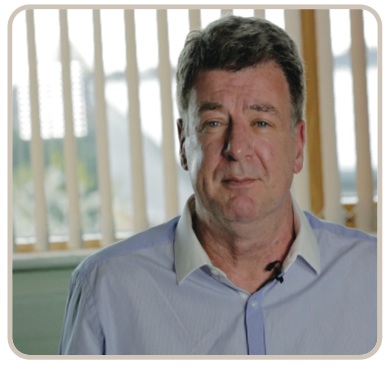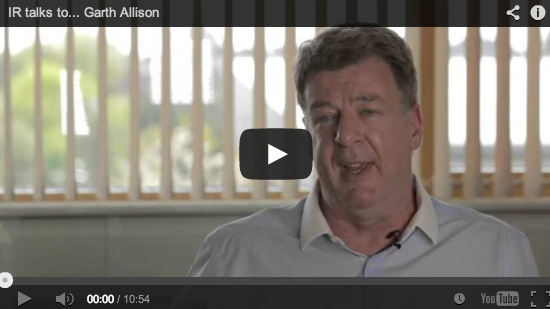Founded in 1985, Fastsigns now has over 540 centres across eight countries and for the second year running it has been certified as a World-Class Franchise by the Franchise Research Institute. So what makes the network so successful – and should you have a place within it? Here UK MD Garth Allison talks about the organisation’s structure and strategy for continued growth.
IR: Over 70% of your centre owners responded to the Franchise Research Institute’s survey to determine satisfaction with the franchise system – their positive feedback leading to Fastsigns’ 2013 World-Class Franchise label. So what makes the brand stand out?
One of the things that makes Fastsigns a great franchise brand is its national advertising fund, which not all franchises offer. The fund allows us to produce programmes and materials on behalf of our centres so that they can complement and supplement what they do on a local basis. We find this works really well.
Fastsigns also offers great training tools and internal forums for franchisees to share information. If they have a problem for instance, to be honest it’s probably happened many, many times before so it of great help to anybody that’s new to the industry. We have top-notch people ready to share information. We have peer group that centre owners can be members of, we have board groups etc. and it gives them the opportunity to get together and share ideas and learn from each other. They’re in business for themselves not on their own and I think that’s an important feature.
The in-house technical team is also a great resource for our franchisees. At any one time we’re testing numerous amounts of equipment so when they come to but a new printer, plotter etc. we’ve already done the research for them, so they don’t have to spend the time or energy, or the money in fact, doing that research – it’s all there for them.
The first UK franchise was in 1994. That number grew to 22 and now stands at 19. Are there other specific geographical locations where you would like to have a presence here?
Yeah, well we certainly want to grow. That’s our intention and what we’re focusing on at this current moment in time. We’re looking to grow in all major cities and towns in the UK. What we don’t want to do is open up in any secondary territories – that’s not of benefit to Fastsigns and certainly not of benefit to any of our owners.
We’re looking to grow through three types of opportunity: new franchises for new owners, a conversion programme for existing sign companies and a co-brand opportunity to enable commercial printers to get into the sign market.
What proportion of turnover and profit does the UK account for – and do you see that changing?
Well the US is obviously the major contributor to the overall network with most of our 535 centres being there. As you’ve pointed out, we currently have 19 in the UK - which equates to about 3.5% of the whole Fastsigns franchise network.
What we’re finding is that we’re growing in terms of our sales and the profitability in our centres. Last year our sales grew by 10% both in the US and in the UK. So the UK is a real contributor to Fastsigns in terms of sales and profit. Our goal is to continue to increase sales and at the same time work to help franchise owners build their own profitability. Part of the plan is to expand our product offering through the ‘more than’ brand promise.
Your CEO Catherine Monson has gone on record saying “2012 was a record breaking year for Fastsigns.” What made it such a bumper year and what’s the organisation’s vision for the future? And, what part does the UK play in that?
Well last year, as I say, we saw growth of about 10% across the network. More importantly, we saw far more of our centres making an increase in sales year-on-year.
One of the major contributing factors last year was our move and slight change in our brand positioning to the ‘more than fast, more than signs’ messaging and what we’re encompassing here is what all Fastsigns centres have been doing in the past but making it more formalised – so we’re making it known we offer more services.
Apart from the traditional signage, banners and vehicle graphics that most sign shops do, we’ve identified areas that we want to move into that are more to do with visual communication than just printed signs and graphics. For example, we’re now finding digital signage is becoming a really important part of what we offer. Plus we do websites, mailing etc.
You mentioned a conversion package to get more independent sign businesses to join up. In 2011 we ran a story on that - it included a 30% reduction in the franchise fee, preferential royalty fees, financial support for equipment and furnishing etc. How successful would you say this programme has been?
Yes, the conversion programme is an ideal way for independent sign businesses to take advantage of what Fastsigns has to offer and help them take business to new levels.
The programme has been a huge success in the US and whilst we have not opened a conversion store in the UK so far we’re hoping to emulate the success in the US.
The benefits of the conversion programme for sign companies are numerous in terms of the support we provide, research and development, continuous updating of websites and all the things we need to do to enable a sign business to develop in terms of sales and profitability.
In terms of cost, the conversion programme can be a sizeable reduction in the fees you would pay as a start-up Fastsigns franchise. And the initial royalties paid to Fastsigns are also reduced as an incentive to get on board.
In the US, what we’ve seen with the printers that have taken up the conversion opportunity is not only an increase in sales but, more importantly, in profitability. Some of the main areas of key benefit to independent signmakers, from our experience, are the marketing and specifically the sales direction we give in terms of filling the spare capacity you may have, and making sure you have the opportunity to grow your business on a profitable basis.
Also, what we do is a lot of research in terms of vertical markets and that can be of great benefit to independent sign companies.
Earlier this year Fastsigns launched this ‘Co-Brand’ opportunity to get independent ‘commercial’ print business owners to expand into signage and other wide-format print offerings. What kind of response are you getting to that?
We had rather a soft launch of this programme and were overwhelmed really with the response we got. From that initial PR campaign in the spring we had a number of commercial printers contact us, that we’ve been to see, and are now talking to about what we can offer each other. We also exhibited at North Print and Pack in Harrogate in May and we’re working with printers to develop relationships from that.
Doesn’t it, potentially, tread of the toes of existing Fastsigns franchisees?
Not really, because we’ll never open another Fastsigns franchise near the location of an existing franchise centre. What we’re looking to do is expand the brand but we don’t want to set people up in territories that are not viable.
What we find is that most of the business within a franchise comes from companies within their territory, so we help them grow that business, then look to introduce new franchises in other territories to maximise opportunity.
We want to grow the brand in a controlled way, because of course some of the owners will eventually want to sell up, so want to see the value of their businesses grow for them as well as us.
My readers might see networks like Fastsigns as fuelling the drive towards ‘commodity’ pricing in a sector that has over the last few years managed to do better than other parts of print – what do you say to that?
In fact it’s just the opposite. Our focus is adding product and services that are not, ideally, commoditised. This enables us to use our consultative selling approach. So we’re looking at things like wallpaper, internal décor, all the things that you need to talk to your client/customer about. It’s really important that very few of the products we sell compete with the online people who are just driving prices down and not offering the added-value aspect.
Do you see ways in which the UK signage and wide-format print market differs from other geographical territories in which Fastsigns operates – and are there lessons Fastsigns UK and other wide-format producers here can take from that to ensure a sustainable future?
Now, typically, there isn’t a lot of difference between the UK and US markets. Three years ago the US was miles ahead of us – but not now. The UK is perhaps more environmentally aware than the US, which is leading to more printing onto fabrics here. But perhaps we are a bit behind them when it comes to digital signage adoption. But all in all, it’s now a global market.
An edited version of this interview can be seen as a video.
{jathumbnail off}



